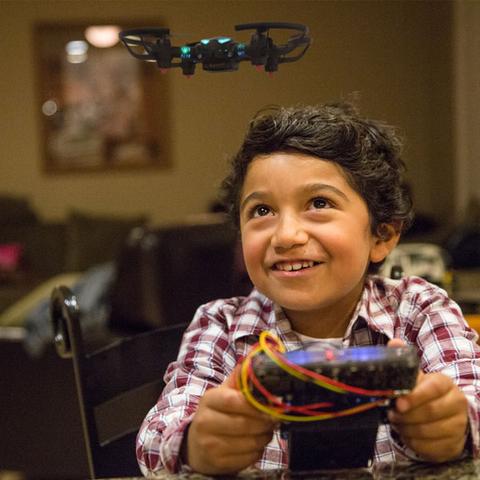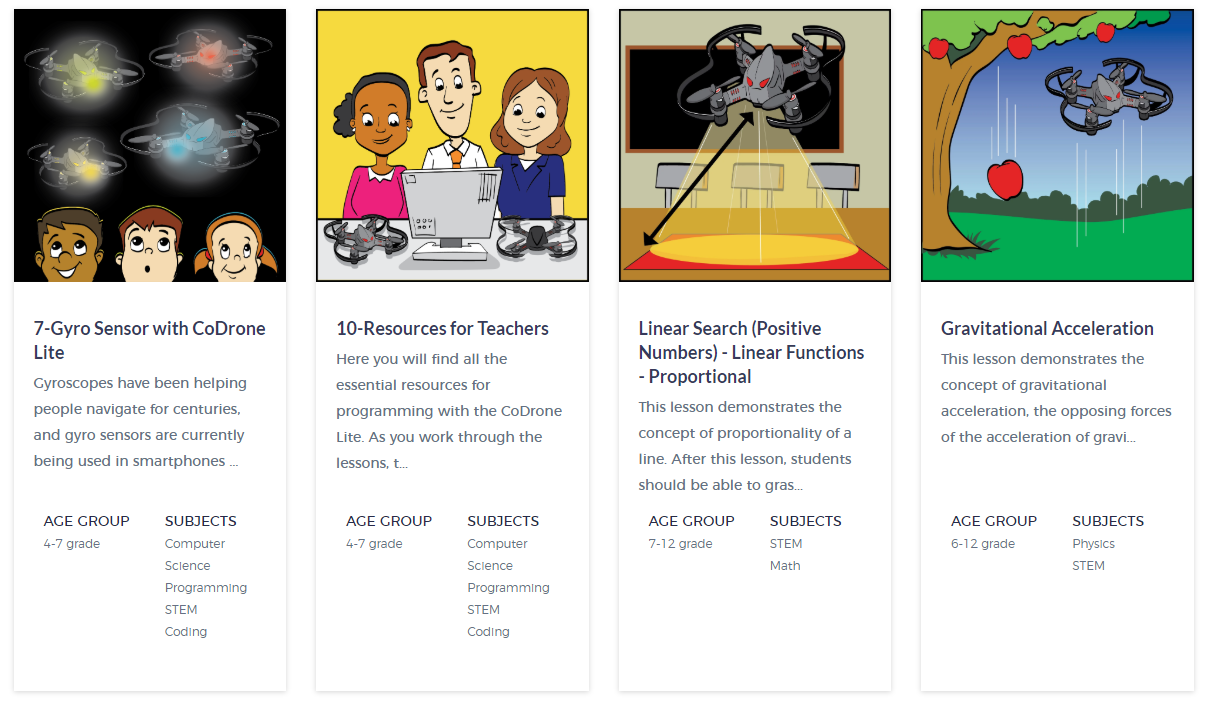By Jess Brown

A new report from Samsung’s Alternative Careers Guide, released last week, found that 16-to-18-year-olds are no longer interested in traditional jobs such as becoming an accountant, teacher, or lawyer, but were more interested in digital roles – with a drone operator being amongst the top ten most popular dream careers. This may be due to the fact that over the last year it has become increasingly common for teachers to utilize interactive learning tools such as drones within the classroom.
By welcoming drones into the classroom, teachers have a new way of making learning more fun and interactive for children, whilst also providing them with the opportunity to learn about technology that they may wish to base their future career on. Below we have listed 10 ways drones are being utilized by teachers across the world.
Drones Developing Motor Skills and Hand-Eye Coordination
Hand-eye coordination is a crucial skill that is taught amongst the majority of young educational programs. From netball to tennis, sports were once thought to be the best way to improve hand-eye coordination. Whilst sports are still one way to teach this skill set, drones have proven to be another alternative. Drones require a lot of focus to use while navigating from one destination to another and can help develop depth perception by requiring the user to judge the distance in space that the drone is flying. Giving students other options to build these necessary fine motor skills means that students are more likely to find success and a niche for themselves that they enjoy and may practice at home or with friends.
Drones Teaching Coding
Coding is one of the most popular jobs in the world right now, which is why more and more students are navigating towards that career. Learning how to code can be less intimidating if students use drones for a hands-on learning experience. In the same way, many schools have adopted robots in order to provide a framework that allows students to experience first-hand the effects of their code, many educators are using drones to engage students into writing programs that allow drones to conduct autonomous flights. This can be very useful to teach computational thinking and help younger students realize the great power of those skills.
Drones Teaching the Laws of Physics
It is a well-known part of the science education program that students are taught about the laws of physics. Flying drones can provide very real examples of how physical laws work such as Newtons' 3rd law for example ‘an object at rest will remain at rest unless acted upon by an outside force’. To teach the first law of motion, the teacher can demonstrate to the students how, if no controls are pressed, the drone stays in place. It cannot hover or move unless the controls are used to power the motor and run the propellers – an outside force. In this way, students learn the laws of physics in a fun and interactive way.
Drones Building Intellectual and Creative Skills
Some students learn best by destroying and rebuilding. These habits tend to show improvement in memory building, as well as improving the child’s intellectual skill set. Working with students on simple projects is helpful, but incorporating drones takes it to the next level. By taking a drone apart and putting it back together, students learn how to build and learn through trial and error. It builds patience and shows a hands-on approach to the mechanics of drones.
Drones Providing Hands-on Learning Experience
Finding ways to allow students to work with their hands on a relevant project is important for student engagement. Students in elementary school tend to enjoy working with any tangible thing that they can get hold of. Worksheets are not always the best method of teaching for every student, as different students learn in different ways. Drones can help teach different topics and subjects if one has the ability to imagine it. Drones allow students to work hands-on, making their learning easier by providing a tangible way to experiment with those things that they are being taught.
Writing Exercises
Another way in which drones can be used in the classroom is by using drone imagery to base a descriptive writing piece around. Teachers are assigning students with an image without giving them the information of where the image was captured from, to then describe in a vivid way, creating the picture in the minds of their peers without showing them the photograph. This way of using drones helps expand students’ descriptive skills as well as engaging them in the activity. By utilizing the student’s descriptive language skills, students are better able to build a rich vocabulary to aid them later in their academic careers. Not only do drones used in this way provide better vocabulary usage skills, but they also aid in the creative imagery skills needed by young learners. This can lead to enhanced reading comprehension by allowing the students to envision what is happening in the scenes set in a book.
Physical Activities
A study by the World Health Organisation (WHO) found that 80% of children between the ages of 11 and 17 are not as physically active as they should be. The desire for sports and spending time outside has been replaced with video games and mobile phones. Teachers can use drones to get the students outside and base physical activity around interaction with the drone.
Maths Teaching Tool
Maths can be a challenging subject to teach younger students, however using engaging tools such as drones can give a real-world application to mathematical problems and equations, helping students not only realize the great power of this subject but also to see the actual result of their work. Schools around the world are experimenting with drones – a school in Bangkok is having students learn how to make and read graphs, calculate distances, and acquire some basic trigonometry concepts by following the path of different drones.
Drones Developing Soft Skills
Due to the ever-increasing amount of technology and online forms of communication becoming apparent, it is becoming important that social and emotional skills are still a core part of a student’s educational program. It has become a high priority for many schools to help their students acquire abilities such as communication, collaborative work, flexibility, and self-learning and drones can be a powerful tool for their development. Some educators are suggesting using drones as part of team projects that require students to work together toward achieving common goals, often in the form of creating shapes, building a structure, or performing a particular action that requires certain coordination and can be viewed from above.
Drones In Higher Education
University courses can greatly benefit from the introduction of drones. Students from fields as varied as journalism, engineering, and even archaeology have started using this technology to enhance their professional training and to add real-world examples to their studies. For example, architecture students are using them to conduct façade inspections on buildings and learn more about structures and construction techniques. Botany, forestry, and biology students are also benefiting from this technology, as it enables them to reach wildlife and plants that are otherwise hard to grasp.
In conclusion, drones can be very powerful learning tools and unlike other technological innovations which are often developed or brought to market by entrepreneurs, it is teachers themselves who are finding new uses and applications that can truly unveil their teaching potential. As always, we advise that all drone operations are to be completed in line with local laws and regulations and within a safe and responsible manner.
Discover ways of use drones in the classroom with RobotLAB



